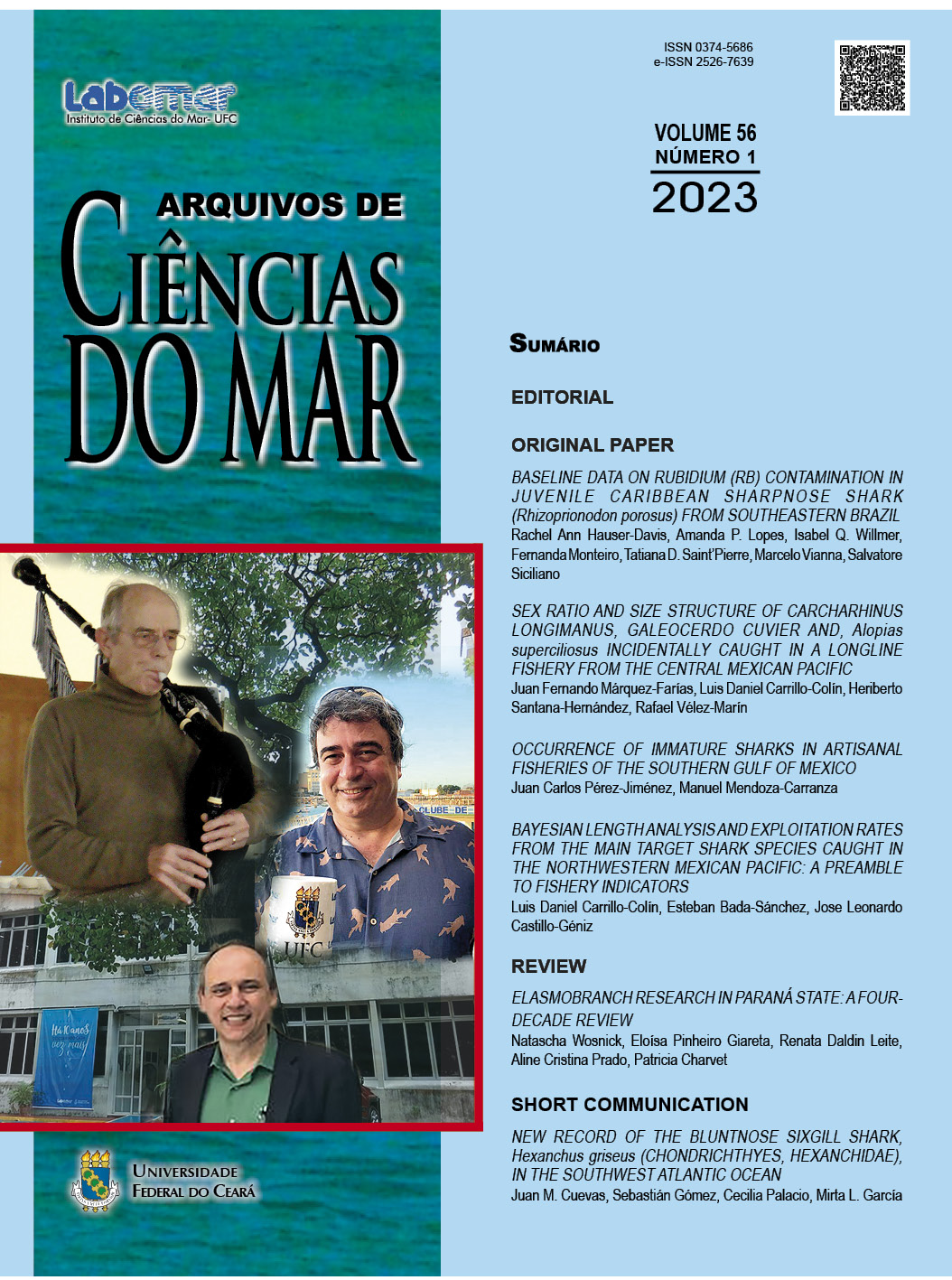HISTOLOGIA DA GLÂNDULA OVIDUCAL DA RAIA-DE-LA PLATA, Atlantoraja platana (GÜNTHER, 1880) (CHONDRICHTHYES, RAJOIDEI)
Histology of the oviducal gland of the La Plata skate, Atlantoraja platana (Günther, 1880) (Chondrichthyes, Rajoidei)
DOI:
https://doi.org/10.32360/acmar.v56i1.92916Abstract
In elasmobranchs, the oviducal gland is a complex structure located between the anterior oviduct and the uterus. This study aimed to understand the anatomical and histological aspects of the oviductal gland of the adult female of the skate Atlantoraja platana. Samples were submitted to AB (Alcian Blue) stains at pH 1.0 and 2.5; as well as PAS (Schiff Periodic Acid Reaction), hematoxylin and eosin (HE) and (carmin best). The anterior oviduct is represented by an outer layer (tunica serosa) and a smooth muscle layer (circular and longitudinal), showing positive reactions with PAS and AB of pH 1.0 and 2.5. The club and papillary zones were responsible for the production of cytoplasmic substances PAS+ and AB+ at pH 1.0 and 2.5. The baffle zone contains spinnerets, which communicate the inner serous secretory tubules with the lumen. In addition, the baffle zone was the region of the gland where the highest concentration of spermatozoa was registered. In the most distal region of the terminal zone,the presence ofserous, mucous and mixed secretion tubules was observed, presenting a ciliated pseudostratified cylindrical epithelium, with goblet cells (PAS+, AB+). Due to its high complexity and histophysiological functionality, the oviducal gland of sharks, batoids and chimaeras can be considered the key element of reproduction.
Keywords: Oviparity, reproductive strategy, reproductive duct, morphology.
Downloads
Published
Issue
Section
License
Copyright (c) 2024 Arquivos de Ciências do Mar

This work is licensed under a Creative Commons Attribution 4.0 International License.
1. Proposta de Política para Periódicos de Acesso Livre
Autores que publicam nesta revista concordam com os seguintes termos:
- Autores mantém os direitos autorais e concedem à revista o direito de primeira publicação, com o trabalho simultaneamente licenciado sob a Licença Creative Commons Attribution que permite o compartilhamento do trabalho com reconhecimento da autoria e publicação inicial nesta revista.
- Autores têm autorização para assumir contratos adicionais separadamente, para distribuição não-exclusiva da versão do trabalho publicada nesta revista (ex.: publicar em repositório institucional ou como capítulo de livro), com reconhecimento de autoria e publicação inicial nesta revista.
- Autores têm permissão e são estimulados a publicar e distribuir seu trabalho online (ex.: em repositórios institucionais ou na sua página pessoal) a qualquer ponto antes ou durante o processo editorial, já que isso pode gerar alterações produtivas, bem como aumentar o impacto e a citação do trabalho publicado (Veja O Efeito do Acesso Livre).

